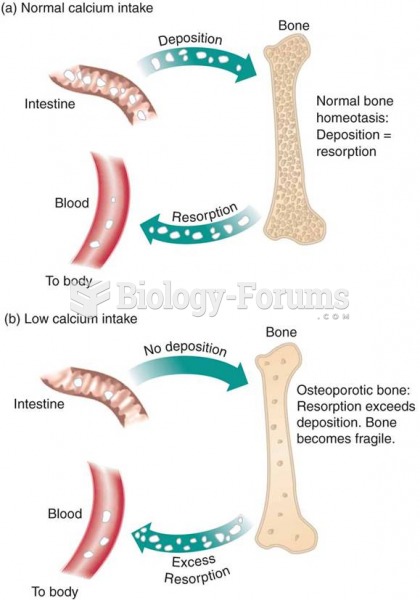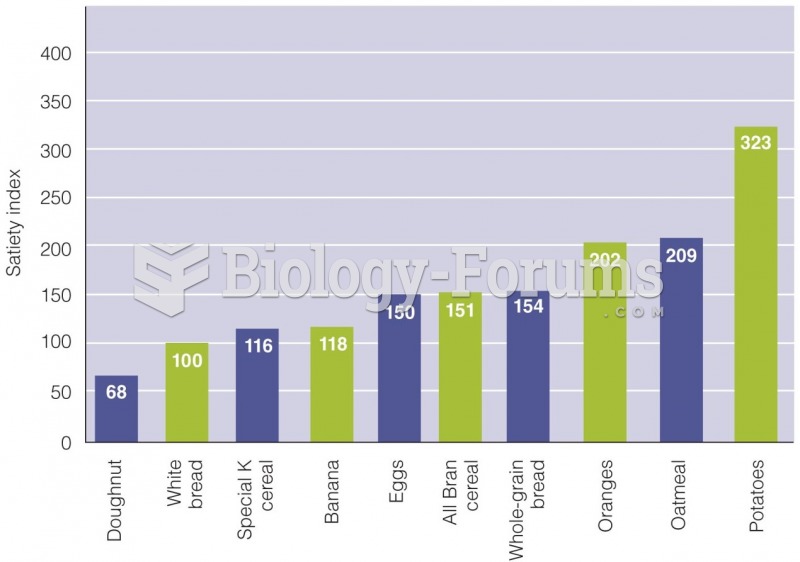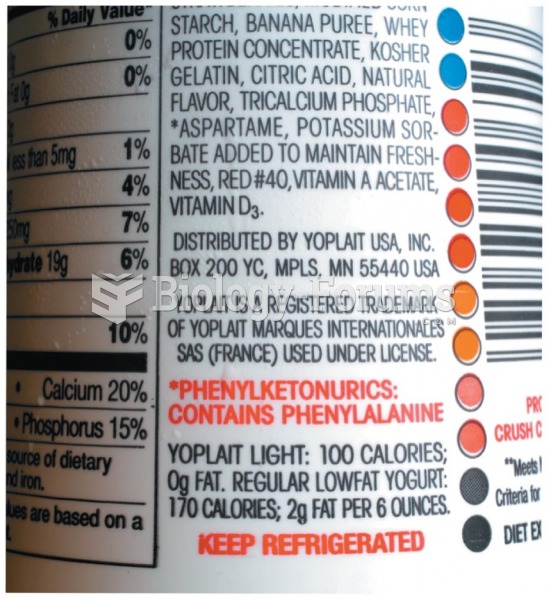Answer to Question 1
Answers: c, d
Good sources of calcium include milk, 1 oz of cheese, yogurt, 3 ounces of seafood, broccoli, and
cooked spinach. Beef, pork, poultry, apples, bananas, potatoes and carrots are considered poor
dietary sources of calcium.
Answer to Question 2
The dual-energy x-ray absorptiometry (DEXA) scan. The DEXA scan is a precise test that emits less
radiation than even a chest x-ray and is considered the best tool currently available for the diagnosis
of osteoporosis. Other tests include quantitative computed tomography, which is much more
expensive than DEXA, and quantitative ultrasound of the heel.
The T-score is a calculated result of the DEXA scan that assesses the patient's bone mineral density
(BMD). Normal results would be less than 1 standard deviation below normal (less than -1). Osteopenia
is 1 to 2.5 standard deviations below normal, or -1 to -2.5. Osteoporosis is more than 2.5 standard
deviations below normal. M.S.'s T-score of -2.7, or 2.7 standard deviations below normal, is defined
as osteoporosis and associated with an increased risk of skeletal fracture. For a T-score below -1.5
in a patient with risk factors or a history of previous fractures, drug therapy for osteoporosis is
recommended.
Answers: a, d, e
Take the medication exactly as prescribed: Take the medication first thing in the morning; take it
with at least 8 ounces of plain water. Mineral water, orange juice, caffeine, and other liquids decrease
absorption of the medication. Allow at least 30 minutes before eating or drinking anything else
to improve absorption of the medication. She needs to remain upright (sit or stand) for at least 30
minutes after taking the medication. Bending or reclining increases the risk of esophageal reflux of
the medication, causing irritation. Abdominal pain, nausea, vomiting, and jaw pain are symptoms of
possible severe side effects and should be reported immediately.
Explain to her that current guidelines recommend for calcium to be obtained from dietary sources
rather than supplements. Supplements will be prescribed if her diet is found to be lacking in calcium.
Smoking cessation: Smoking is known to accelerate bone loss and increase the metabolism of
medications. Smoking cessation methods include gum, patches, hypnosis, and support groups.
Some patients fail many times before becoming successful at stopping smoking. She should not
give up.
Exercise: Regular weight-bearing exercise decreases calcium loss from bones (swimming does not
qualify). Exercise for 30 minutes at least three times a week. Start slowly and increase gradually.
Walking is excellent. It is important to get enough weight-bearing exercise (at least 30 minutes
on most days). If your feet touch the ground during exercise, it is considered weight bearing.
Running and walking are weight-bearing; swimming and biking are not. Low-impact aerobic
movement or dancing is also effective. It is important for the exercise to be enjoyable to increase
the likelihood of long-term compliance because the benefit of exercise is quickly lost once the
individual stops exercising.
Diet: Adequate protein, calcium, and vitamin D are essential to bone health. Dietary sources of
calcium include milk, cottage cheese, yogurt, hard cheeses, and dark green vegetables such
as broccoli or spinach. If taking supplemental calcium, it should be taken with meals to ensure
optimal absorption. M.S. should be referred to a registered dietitian for dietary analysis and
recommendations for a nutritional plan that emphasizes vegetables, fruits, and low-fat dairy and
protein sources. She needs to reduce her intake of caffeine.







